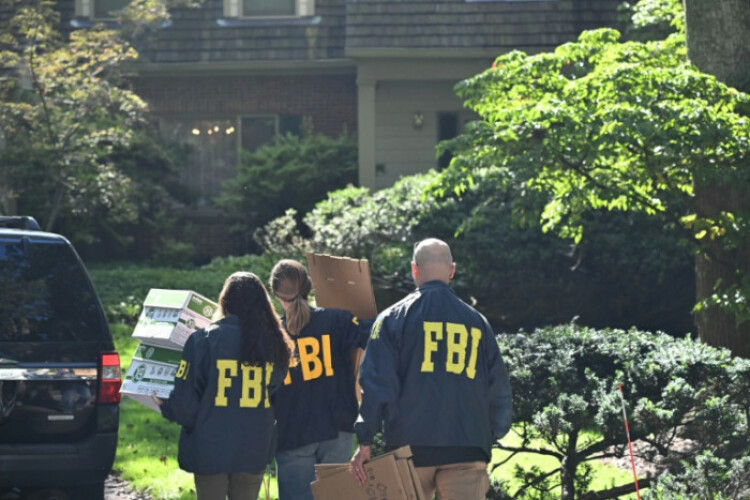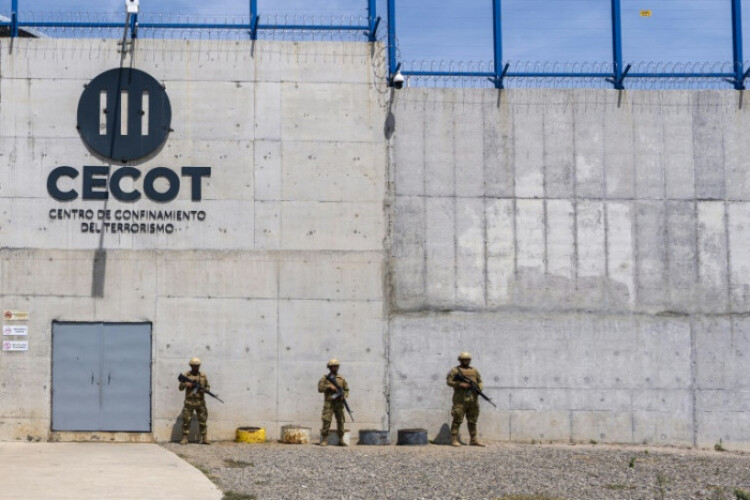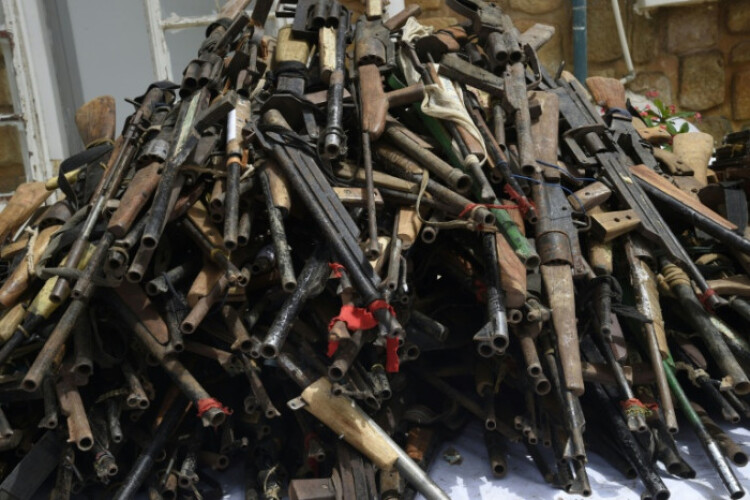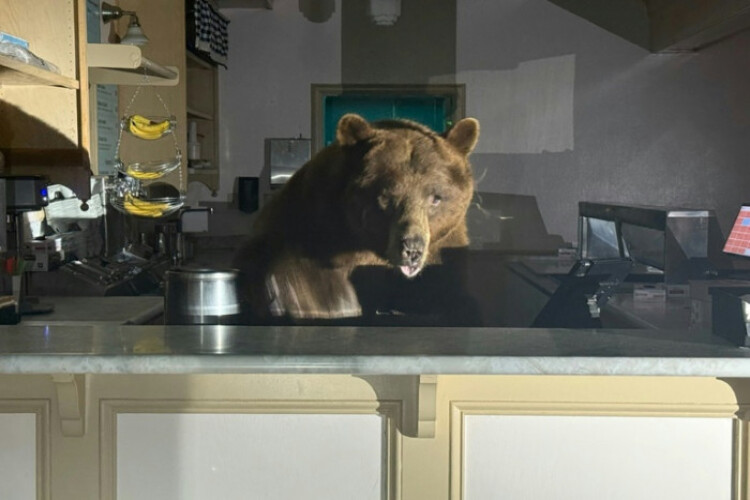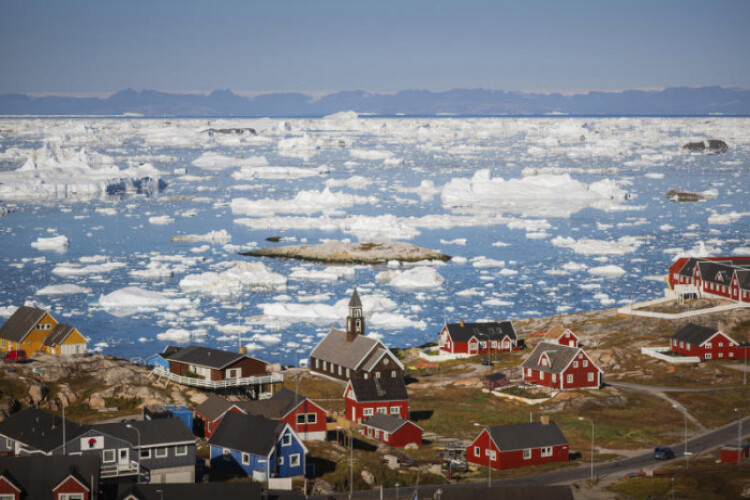
NEW YORK — Christian Ulloriaq Jeppesen remembers how this all started.
In 2019, during Donald Trump's first term as United States president, Trump floated the idea of the United States buying the island of Greenland. At the time, most people in Greenland (and Denmark, the European country that controls it) thought his suggestion was a joke.
"Everyone said, 'Ha-ha, you can't just buy a country; he doesn't mean it,'" Jeppesen, a native Greenlander and a radio producer, said by telephone. "Obviously, that was the wrong way to take it. Look at where we are today."
Now Trump has doubled down on his insistence that the United States needs to annex Greenland for security reasons. And that has Greenlanders asking the same questions as everyone else, but with a lot more uneasiness.
Is Trump just being bombastic again, floating a fanciful annexation plan that he may know is a stretch?
Or is he serious?
Based on his comments in the past few weeks, Trump appears completely serious. Never mind that Denmark's leadership has said the territory is not for sale, and its future must be determined by the local population.
"For purposes of national security and freedom throughout the World, the United States of America feels that the ownership and control of Greenland is an absolute necessity," Trump wrote in late December in a social media post announcing his choice for ambassador to Denmark.
At a news conference Tuesday, the president-elect took an even more surprising swerve. He refused to rule out using military force to get Greenland.
France and Germany are taking Trump seriously enough that they both issued statements Wednesday defending Greenland's territorial integrity and warning against the threat of any military action.
Chancellor Olaf Scholz of Germany said the principle of the inviolability of borders applied to every country, "no matter whether it's a very small one or a very powerful one." The French foreign minister, Jean-Noël Barrot, said that it was "obviously out of the question" to threaten another country's "sovereign borders."
"Do I think the United States will invade Greenland? The answer is no," Barrot told France Inter radio. "Have we entered an era in which the rule of the strongest is returning? The answer is yes."
A further sign of Trump's interest in Greenland came Tuesday when his son Donald Trump Jr suddenly showed up on the island.
Donald Trump Jr departs from the airport in Nuuk, Greenland, on Tuesday. (Photo: Reuters)
The president-elect's son landed in the afternoon in Greenland’s capital, Nuuk; toured some sights, including a statue of an 18th-century Danish Norwegian missionary; and was hosted by a Danish Trump supporter. He said the reason for the trip was personal, not official, but the president-elect posted about his son and "various representatives" visiting and said, "MAKE GREENLAND GREAT AGAIN."
"This is all getting scary," Jeppesen said.
At 836,000 square miles, Greenland is the world's largest island, about a fourth the size of the United States. It is an autonomous territory of Denmark and elects two representatives to Denmark's parliament and 31 to its own, which is responsible for most aspects of the island's government. Denmark, however, retains control over defence, security matters and elements of international affairs.
Its location and landscape make it attractive to Trump on several levels.
Greenland is strategically positioned at the top of the world, east of Canada along the Arctic Sea, and is home to a large US military base. It is loaded with mineral resources such as cobalt, copper and nickel.
And as climate change melts the ice, it is opening up new paths through the Arctic zone, which is becoming a fiercely contested region for shipping, energy and other natural resources, as well as military manoeuvring.
The blast of attention falls at a touchy time for Greenland. More Greenlanders are chafing for independence, and many feel increasingly resentful toward Denmark, which has played an overseer role for decades. Greenland has a tiny population for its size, and most of the 56,000 Greenlanders are Inuit, part of a group of peoples who also live in Canada and Alaska.
The Greenlandic language is completely different from Danish. Many people follow a culture and belief system quite apart from those in Western Europe. And, like Indigenous people in the United States and elsewhere, they have been treated unequally for a long time.
The Greenlanders' disaffection with Denmark was heightened two years ago after revelations emerged about Danish doctors fitting thousands of Indigenous women and girls with intrauterine devices in the 1960s and 1970s, often without their knowledge.
Danish officials have repeatedly said that Greenland is not for sale, though they have emphasised their desire for warm relations with the United States and signalled their openness to dialogue. Last month, Denmark's king jumped into the fray by abruptly changing the country’s coat of arms to more prominently feature symbols of Greenland and the Faeroe Islands (another territory under Denmark's control) — a polar bear and a sheep.
Amid this debate over identity, many people are now puzzling over Trump's intentions.
"Is it just a distraction?" asked Ulrik Pram Gad, a senior researcher at the Danish Institute for International Studies. "Or is it threat-based diplomacy?"
Aviaaja Sandgren, a nurse who lives in the small town of Qaqortoq (all of Greenland’s towns are small), does not want to be part of the United States.
"We would lose many benefits," she said when reached by phone Wednesday. "We have free education, education grants, free health care and free medicine. Everything is free here in Greenland.
"I know they don't have that in the US," she said.
Denmark governed Greenland as a colony from the 1700s until the middle of the 20th century and heavily suppressed Indigenous culture. During World War II, the United States set up bases in Greenland to keep it out of the hands of the Nazis after Germany occupied Denmark, and when the war was over, it offered to buy the island from Denmark, which refused.
Greenland was incorporated into Denmark in 1953, with the Danes helping to overhaul the economy, transportation and education systems. In 1979, Greenland gained limited autonomy over internal matters and established its own parliament.
Thirty years later, Denmark expanded Greenland's self-rule, and under that agreement, Greenlanders have the right to hold a referendum on independence. The reason it has not happened yet, analysts say, is that Greenland is still heavily dependent on Denmark for many professional services — including doctors, nurses and teachers — as well as US$500 million a year in subsidies.
US President-elect Donald Trump speaks to members of the media following a meeting with Senate Republicans at the US Capitol in Washington, DC, on Wednesday. (Photo: Bloomberg)
Aaja Chemnitz, one of the two representatives from Greenland in the Danish parliament, said she worried that Trump might be trying to pump up Greenland’s independence movement to further his own interests. "We risk becoming a pawn in a game between Denmark and the US," she said.
Greenland benefits from the Danish welfare system, she said, and it would do a lot worse if it became part of the United States.
"I've seen the American system," Chemnitz, who lived in New York while working for the United Nations (UN), said in a telephone interview. "I know how harmful it can be for equality."
Jeppesen said Trump might be misinterpreting the independent nature of Greenlanders. Greenland is not just a big chunk of territory. It is a nation, a story, a homeland.
"There is this enormous pride you get from being one of just 56,000," Jeppesen said. "Greenland is amazing. It's beautiful. It's the most wonderful country in the world.
"And it is a country fighting for independence," he added. "Not a piece of property you can buy."
This article originally appeared in The New York Times.
In 2019, during Donald Trump's first term as United States president, Trump floated the idea of the United States buying the island of Greenland. At the time, most people in Greenland (and Denmark, the European country that controls it) thought his suggestion was a joke.
"Everyone said, 'Ha-ha, you can't just buy a country; he doesn't mean it,'" Jeppesen, a native Greenlander and a radio producer, said by telephone. "Obviously, that was the wrong way to take it. Look at where we are today."
Now Trump has doubled down on his insistence that the United States needs to annex Greenland for security reasons. And that has Greenlanders asking the same questions as everyone else, but with a lot more uneasiness.
Is Trump just being bombastic again, floating a fanciful annexation plan that he may know is a stretch?
Or is he serious?
Based on his comments in the past few weeks, Trump appears completely serious. Never mind that Denmark's leadership has said the territory is not for sale, and its future must be determined by the local population.
"For purposes of national security and freedom throughout the World, the United States of America feels that the ownership and control of Greenland is an absolute necessity," Trump wrote in late December in a social media post announcing his choice for ambassador to Denmark.
At a news conference Tuesday, the president-elect took an even more surprising swerve. He refused to rule out using military force to get Greenland.
France and Germany are taking Trump seriously enough that they both issued statements Wednesday defending Greenland's territorial integrity and warning against the threat of any military action.
Chancellor Olaf Scholz of Germany said the principle of the inviolability of borders applied to every country, "no matter whether it's a very small one or a very powerful one." The French foreign minister, Jean-Noël Barrot, said that it was "obviously out of the question" to threaten another country's "sovereign borders."
"Do I think the United States will invade Greenland? The answer is no," Barrot told France Inter radio. "Have we entered an era in which the rule of the strongest is returning? The answer is yes."
A further sign of Trump's interest in Greenland came Tuesday when his son Donald Trump Jr suddenly showed up on the island.
Donald Trump Jr departs from the airport in Nuuk, Greenland, on Tuesday. (Photo: Reuters)
The president-elect's son landed in the afternoon in Greenland’s capital, Nuuk; toured some sights, including a statue of an 18th-century Danish Norwegian missionary; and was hosted by a Danish Trump supporter. He said the reason for the trip was personal, not official, but the president-elect posted about his son and "various representatives" visiting and said, "MAKE GREENLAND GREAT AGAIN."
"This is all getting scary," Jeppesen said.
At 836,000 square miles, Greenland is the world's largest island, about a fourth the size of the United States. It is an autonomous territory of Denmark and elects two representatives to Denmark's parliament and 31 to its own, which is responsible for most aspects of the island's government. Denmark, however, retains control over defence, security matters and elements of international affairs.
Its location and landscape make it attractive to Trump on several levels.
Greenland is strategically positioned at the top of the world, east of Canada along the Arctic Sea, and is home to a large US military base. It is loaded with mineral resources such as cobalt, copper and nickel.
And as climate change melts the ice, it is opening up new paths through the Arctic zone, which is becoming a fiercely contested region for shipping, energy and other natural resources, as well as military manoeuvring.
The blast of attention falls at a touchy time for Greenland. More Greenlanders are chafing for independence, and many feel increasingly resentful toward Denmark, which has played an overseer role for decades. Greenland has a tiny population for its size, and most of the 56,000 Greenlanders are Inuit, part of a group of peoples who also live in Canada and Alaska.
The Greenlandic language is completely different from Danish. Many people follow a culture and belief system quite apart from those in Western Europe. And, like Indigenous people in the United States and elsewhere, they have been treated unequally for a long time.
The Greenlanders' disaffection with Denmark was heightened two years ago after revelations emerged about Danish doctors fitting thousands of Indigenous women and girls with intrauterine devices in the 1960s and 1970s, often without their knowledge.
Danish officials have repeatedly said that Greenland is not for sale, though they have emphasised their desire for warm relations with the United States and signalled their openness to dialogue. Last month, Denmark's king jumped into the fray by abruptly changing the country’s coat of arms to more prominently feature symbols of Greenland and the Faeroe Islands (another territory under Denmark's control) — a polar bear and a sheep.
Amid this debate over identity, many people are now puzzling over Trump's intentions.
"Is it just a distraction?" asked Ulrik Pram Gad, a senior researcher at the Danish Institute for International Studies. "Or is it threat-based diplomacy?"
Aviaaja Sandgren, a nurse who lives in the small town of Qaqortoq (all of Greenland’s towns are small), does not want to be part of the United States.
"We would lose many benefits," she said when reached by phone Wednesday. "We have free education, education grants, free health care and free medicine. Everything is free here in Greenland.
"I know they don't have that in the US," she said.
Denmark governed Greenland as a colony from the 1700s until the middle of the 20th century and heavily suppressed Indigenous culture. During World War II, the United States set up bases in Greenland to keep it out of the hands of the Nazis after Germany occupied Denmark, and when the war was over, it offered to buy the island from Denmark, which refused.
Greenland was incorporated into Denmark in 1953, with the Danes helping to overhaul the economy, transportation and education systems. In 1979, Greenland gained limited autonomy over internal matters and established its own parliament.
Thirty years later, Denmark expanded Greenland's self-rule, and under that agreement, Greenlanders have the right to hold a referendum on independence. The reason it has not happened yet, analysts say, is that Greenland is still heavily dependent on Denmark for many professional services — including doctors, nurses and teachers — as well as US$500 million a year in subsidies.
US President-elect Donald Trump speaks to members of the media following a meeting with Senate Republicans at the US Capitol in Washington, DC, on Wednesday. (Photo: Bloomberg)
Aaja Chemnitz, one of the two representatives from Greenland in the Danish parliament, said she worried that Trump might be trying to pump up Greenland’s independence movement to further his own interests. "We risk becoming a pawn in a game between Denmark and the US," she said.
Greenland benefits from the Danish welfare system, she said, and it would do a lot worse if it became part of the United States.
"I've seen the American system," Chemnitz, who lived in New York while working for the United Nations (UN), said in a telephone interview. "I know how harmful it can be for equality."
Jeppesen said Trump might be misinterpreting the independent nature of Greenlanders. Greenland is not just a big chunk of territory. It is a nation, a story, a homeland.
"There is this enormous pride you get from being one of just 56,000," Jeppesen said. "Greenland is amazing. It's beautiful. It's the most wonderful country in the world.
"And it is a country fighting for independence," he added. "Not a piece of property you can buy."
This article originally appeared in The New York Times.

